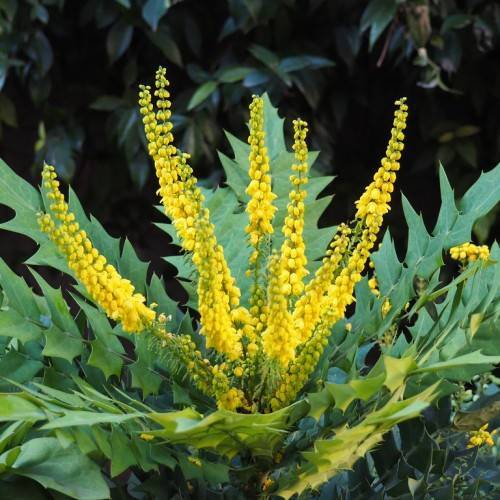
Oregon grape-holly
Mahonia japonica
Cycle:
Perennial
Watering:
Minimum
Hardiness Zone:
6 - 8
Flowers:
Flowers
Sun:
Part shade,full shade
Fruits:
Fruits Ready In Winter
Edible:
Yes
Leaf:
Yes
Growth Rate:
Low
Maintenance:
Low
Poisonous To Pets:
Yes
Salt Tolerant:
Yes
Invasive:
Yes
Care Level:
Medium
watering
Oregon grape-holly (Mahonia japonica) should be watered sparingly. During the summer, water the plant once per week with 1-2 quarts of lukewarm water. During the winter, reduce watering to once every other week or less. Always check the soil moisture level before watering, as the plant should not be allowed to dry out completely. If the soil is still moist, there is no need to water.
sunlight
Oregon grape-holly (Mahonia japonica) prefers bright, indirect sunlight, so it should be placed near a south- or east-facing window or small, protected patio to get the ideal amount of sunlight. Although it can tolerate low, indirect light, it may become leggy if it does not receive enough light. Additionally, this species benefits from full, direct sunlight for 2 or more hours a day during the summer months. It is important to avoid exposing Oregon grape-holly to direct sunlight in the heat of the day, however, as this could lead to leaf scorching. If kept indoors and not exposed to enough sunlight, this species may become pale in color, so it is best to move it outdoors during the growing season.
pruning
Oregon grape-holly (Mahonia japonica) should be pruned in late winter/early spring, just before new growth begins. Generally, you should prune it just enough to keep the plant’s size under control and to maintain an attractive, healthy shape. Most deciduous varieties don’t need much pruning, but evergreen types should be pruned more heavily. It is best to remove any dead, damaged, or diseased branches as soon as they are noticed. Depending on the size and form of the plant, you can thin out the interior growth to allow more light penetration and air circulation, and selectively remove any stems that cross or rub against each other.
